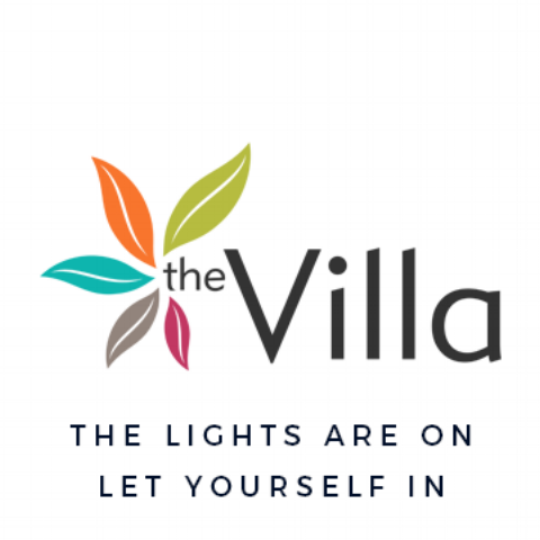Musings on Urban Adventures and Wildlife Safaris in Kenya | CAROL
Last month in December, I checked off a bucket-list-fervent-have-to dream. I went to Africa. Well, actually, we (The Villa crew) went to Africa. If you’ve been following our blog, The Villa, you know that we were in Kenya last month to teach leadership skills to an extraordinary group of United Nations World Food Programme women leaders. We also made time to go on three safaris.
I had no idea what to expect. Always an armchair traveler, I’d read and seen images of Africa, and it all seemed exotic and somewhat mystical, and it was. But, it was also a lot more. I am passionate about travel, not just for a getaway vacation (that usually involves a beach), but to also immerse myself into a new culture and environment. I love it. It satisfies my yearning-to-learning desires and quenches my unremitting thirst for new experiences. As J.R.R. Tolkien wrote, “Not all who wander are lost.”
Needless to say, I was elated to finally get to Africa, to experience some of its rich culture and history. I was especially thrilled to go on safari. I’d only ever seen wild African animals in zoos, and I imagined that “going on a safari” meant days-long forays into savannas and jungles far from civilization. While those are certainly available, affordable and breathtaking safaris are available close to Africa’s cities and urban areas for people who are there for work or shorter periods of time. We were privileged to go on three wonderfully adventurous safaris, all within easy reach of Nairobi.
Minutes from the airport in the fascinating and very modern city of Nairobi is Nairobi National Park. Nairobi is a metropolitan city of over 3 million people, and bordering it is an enormous national park game reserve teeming with giraffes, baboons, ostriches, lions, rhinos, buffalo, zebras, and more. I’d read about this before I arrived, but I didn’t fully understand that it actually sat on edge of the city of Nairobi. My first exposure to the park was on the highway in a taxi from my hotel near the airport. I didn’t realize that we were zipping past Nairobi National Park until my taxi driver casually remarked and then pointed, “Ostriches.” I couldn’t believe it. As I strained my eyes and gasped with excitement, he next directed my attention to the baboons who were nonchalantly sitting by the road, foraging for food and tending to their clinging babies, which put me into full-blown apoplexy. Needless to say, I was beyond thrilled.
The word “safari” is derived from the Swahili word for “journey”. Originally, going on safari meant that big game would be hunted, shot and then arduously dragged overland by a small army of local tribesmen. Today, in contemporary Africa, a safari more often includes the rest of us who are not hunters, but want to experience viewing and photographing wildlife in their natural environments, steep ourselves in the local cultures of Africa, explore its stunning scenic places, natural wonders and historical sights, and maybe, while we are at it, participate in adventure and outdoor activities.
We managed to do much of this in the 11 days we were in Kenya. On our first (urban) safari, we explored Nairobi, a fascinating city of contrasts with its modern architecture, upscale shopping malls and restaurants, and sophisticated and stylish people. We saw its extreme poverty too, which is always sobering. We walked to Maasai markets and haggled with brightly dressed Maasai artists, where we spent far too much money on gorgeous beaded jewelry, sleekly carved ebony animal sculptures, brilliantly painted artwork, and intricately woven baskets. We ate authentic Kenyan food and we met and fell in love with the Kenyan school girls who live in the Kibera slum.
For our wildlife safaris, we first went into the iconic Nairobi National Park, where I was overcome with emotion as I photographed zebras and giraffes, gazelles and rhinos. Days later, we traveled two hours outside of the city to the Rift Valley and went on a small boat safari on Lake Nakuru to see flamingos and witness hippos at close range. That afternoon, we pedaled ten miles on a bicycle safari through Hells Gate National Park, with its towering cliffs, deeply gouged gorges and stark rock towers. No kidding, at one point, we had to stop to allow a dazzle of zebras to cross the road. Yes, you read that right. A group of zebras is called a dazzle. Could that be more perfect a name? We hiked the Hell’s Gate Lower Gorge with its slot canyons and hot mineral springs, guided by our friendly Maasai guide, Francis. Not only did he share with us with his knowledge of the natural landscape, but also enlightened us on many of the cultural, political and environmental challenges of Kenya.
Africa is utterly mesmerizing, and I now understand why people have to go back. When I first arrived, I stood in line waiting to go through customs at the Jomo Kenyatta International Airport in Nairobi for what felt like hours. After 20 hours of travel, I was jet-lagged, hungry and eager to get to my hotel room and a soft bed, but the line was long for non-citizens. Undoubtedly, the people around me felt the same. But there was something else I couldn’t help but notice. Despite their exhaustion from their own travel, people were visibly excited. I spoke with one young woman and her husband, a Kenyan native, who now live in Australia, who were returning for the first time in several years to visit family. She said with passion, “You will love Africa. It gets into your soul and you have to come back.”
I now understand what she means.

















